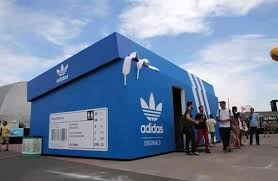Best Marketing Strategies for a D2C Startup Business on a Low Budget
In the
rapidly evolving landscape of direct-to-consumer (D2C) commerce, startups face
the dual challenge of establishing brand visibility and driving sales while
operating within stringent budget constraints. The most effective strategies
for these businesses hinge on creativity, hyper-targeting, and leveraging
digital tools to maximize reach without significant financial investment. Key
approaches include guerrilla marketing tactics such as sticker campaigns and
pop-up shops, which capitalize on unconventional methods to generate buzz.
Simultaneously, digital platforms like social media and email marketing offer
cost-efficient channels for personalized engagement and direct communication.
By focusing on customer pain points, optimizing organic growth through
user-generated content, and learning from successful case studies like Frank Body
and Gymshark, D2C startups can build sustainable growth trajectories. The
integration of these strategies not only fosters brand loyalty but also ensures
competitive agility in a crowded market.
Guerrilla Marketing: Unconventional Tactics for
Maximum Impact
Creativity Over Capital
Guerrilla
marketing thrives on bold, low-cost tactics that disrupt traditional
advertising norms. For D2C startups, this approach aligns perfectly with
limited budgets, as it prioritizes ingenuity over financial resources. Reddit’s
iconic alien logo sticker campaign, which cost only $500, became a cultural
phenomenon, appearing on laptops, cars, and public spaces nationwide. This tactic exemplifies how
simple, tactile branding tools can achieve widespread recognition without
expensive ad buys. Similarly, pop-up shops offer flexible, temporary retail
spaces that can be set up in homes, offices, or partnered locations, reducing
overhead costs while creating immersive brand experiences.
Hyper-Targeted Campaigns
The
efficacy of guerrilla marketing lies in its ability to meet audiences in
unexpected contexts. For instance, a French furniture company transformed 240
hotels into showrooms, allowing customers to interact with products in real-world
settings. This strategy not only
minimized real estate expenses but also embedded the brand into daily life,
fostering emotional connections. By focusing on high-traffic areas or niche
communities, startups can amplify reach while maintaining relevance.
Leveraging Digital Platforms for Organic Growth
Social Media as a Growth Engine
Organic
social media strategies are indispensable for D2C startups. Frank Body, a
skincare brand, leveraged Instagram and user-generated content (UGC) with the
hashtag #frankeffect to generate $20 million in revenue within two years7. By encouraging customers to
share their experiences, brands can build authentic communities without paid
promotions. Gymshark further demonstrated this by launching TikTok fitness
challenges that reached 20 million users, driving exponential growth through
viral engagement7.
Email Marketing: Personalization at Scale
Email
remains one of the most cost-effective channels for direct communication. D2C brands
like Who Gives A Crap achieved a 250% increase in subscriptions by
personalizing their email campaigns and offering transparent billing reminders. Segmentation and tailored
content, such as exclusive discounts or product recommendations, enhance open
rates and conversions. For example, Equator Coffee saw a 400% revenue boost
after enabling subscribers to modify orders via a self-service portal, reducing
support costs while improving customer satisfaction.
Personalization and Direct Customer Engagement
Addressing Pain Points with Precision
Successful
D2C startups identify and solve specific customer frustrations. Dollar Shave
Club disrupted the razor market by addressing inflated prices, offering
affordable subscriptions directly to consumers. This strategy not only
differentiated the brand but also built loyalty through consistent value
delivery. Similarly, Nike’s D2C model capitalized on personalized shopping
experiences, leading to an 84% surge in digital sales during peak periods.
Building Interactive Experiences
Mecca
Cosmetics allocated 30% of its retail space to interactive zones, blending
offline and online engagement to enhance customer experience (CX). For startups, replicating this
digitally through AR try-ons or virtual consultations can bridge the gap
between discovery and purchase. Chaeban Ice Cream, for instance, used
subscription models to predict flavor preferences, turning customer feedback
into actionable insights.
Brand Control and Customer Experience Optimization
Consistency Across Touchpoints
D2C
brands retain full control over messaging, pricing, and distribution, ensuring
cohesive brand narratives. Harry’s Razors maintained this
by bypassing retailers, offering premium quality at lower prices through direct
sales. This autonomy allows startups
to iterate quickly based on feedback, as seen with Highwire Coffee, which
automated payment error resolutions to reduce customer friction.
Enhancing Lifetime Value Through Loyalty Programs
Loyalty
initiatives, such as VIP discounts or early access to sales, incentivize repeat
purchases. Ready, Set, Food! increased checkout rates by 10% after introducing
subscription discounts and optimizing website speed. Transparent communication,
exemplified by Who Gives A Crap’s billing reminders, further strengthens trust
and retention.
Case Studies: Lessons from D2C Trailblazers
Frank Body: UGC and Authenticity
Frank
Body’s reliance on customer testimonials and influencer partnerships
underscores the power of authenticity. By fostering a community-driven brand
image, they achieved rapid growth with minimal ad spend.
Gymshark: Viral Challenges and Community Building
Gymshark’s
fitness challenges on TikTok not only engaged millions but also positioned the
brand as a lifestyle authority. Collaborations with micro-influencers amplified
reach while maintaining relatability7.
L’Oreal’s Color and Co: Personalization as a Differentiator
L’Oreal’s
D2C sub-brand offered live consultations and customized hair dye kits, merging
convenience with personalization. This approach highlights how
tailored solutions can justify premium pricing even in competitive markets.
Conclusion: Synthesizing Low-Budget Strategies for
D2C Success
For D2C
startups, the path to success lies in blending creativity with data-driven
precision. Guerrilla tactics like sticker campaigns and pop-ups generate
initial buzz, while digital platforms enable scalable, personalized engagement.
By focusing on customer pain points and leveraging organic growth through UGC,
startups can build loyal communities without excessive spending. Case studies
of brands like Frank Body and Dollar Shave Club illustrate the transformative
potential of these strategies. Ultimately, the key is to maintain brand
consistency, iterate based on feedback, and prioritize customer experience at every
touchpoint. As the D2C landscape evolves, startups that master these low-cost,
high-impact methods will not only survive but thrive in an increasingly
competitive arena.



Comments
Post a Comment